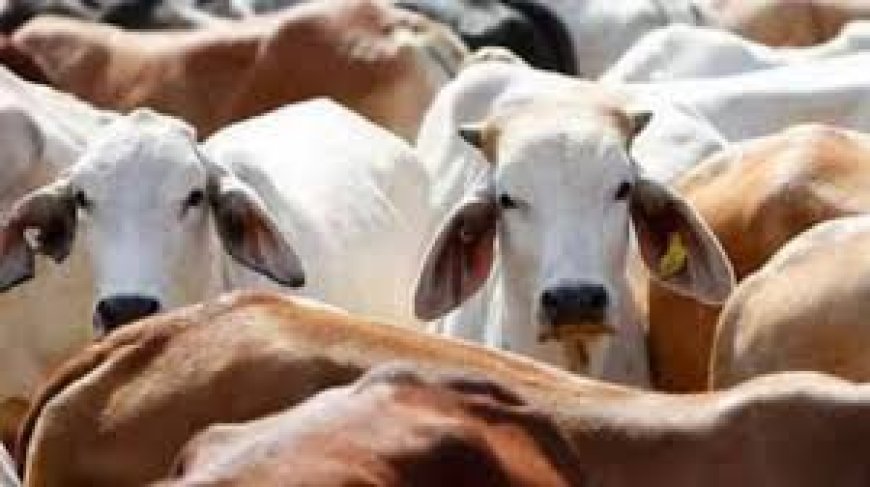Non-veg milk’: What it is and why it’s the key sticking point in the India–US trade deal
The India–US trade deal is facing hurdles over ‘non-veg milk’ — milk from cattle fed animal protein. Discover why it’s a sensitive issue and what it means for trade relations and investors.

As India and the United States edge closer to finalizing a long-awaited trade agreement, a surprising and culturally sensitive issue has emerged as a key sticking point — the classification and import of what’s being termed as “non-veg milk.” Though the broader trade pact covers strategic sectors such as pharmaceuticals, defense cooperation, and digital services, it is the dairy clause that has brought talks to a near halt.
At the heart of the matter lies a fundamental difference in how milk production is approached and perceived in both countries, entangling trade negotiations with religious sentiments, ethical food standards, and domestic economic interests.
What Is ‘Non-Veg Milk’?
The term “non-veg milk” is a colloquial descriptor gaining traction in Indian policy circles and media, referring to milk derived from cattle that have been fed animal-derived feed, such as blood meal, bone meal, or fish meal — all common in industrial dairy farming practices in countries like the United States.
In India, where a majority of the population identifies with religious or cultural vegetarianism, milk is not merely a dietary staple but a sacred product, especially in Hinduism. This makes the idea of importing milk produced via non-vegetarian feed practices highly controversial.
“Indian consumers have a strong emotional and spiritual attachment to milk. For many, milk is considered pure, and anything that compromises that sanctity is unacceptable,” said Dr. Meena Rao, a food ethics researcher at Jawaharlal Nehru University.
US Dairy Standards vs. Indian Sensitivities
The United States is the world's second-largest milk producer and has a well-developed dairy export industry. American dairy standards permit the use of animal protein in feed, primarily to enhance growth and productivity. This practice is in line with guidelines from the US Food and Drug Administration (FDA) and is widely accepted in global trade.
However, India’s Food Safety and Standards Authority (FSSAI) currently prohibits such imports unless they can be certified as completely vegetarian. This restriction, in the US perspective, is viewed as a non-tariff barrier — a regulation that impedes fair access to India's large and growing dairy market.
"The US dairy industry is open to meeting India's phytosanitary concerns, but religious or ideological restrictions must be treated separately from science-based trade rules,” said Peter Reinhardt, a policy advisor with the US Dairy Export Council.
Why It’s a Major Hurdle
Despite progress in many other aspects of the bilateral trade deal — such as reducing tariffs on tech products, pharmaceuticals, and aircraft components — the dairy clause has proved difficult to resolve.
Indian trade officials, under pressure from powerful dairy cooperatives and religious groups, are reluctant to allow dairy imports that could harm domestic producers and trigger cultural backlash. India’s $150-billion dairy industry, dominated by cooperatives like Amul and Nandini, supports over 80 million rural households.
“Introducing US dairy products — especially those perceived as ‘non-veg’ — could deeply disrupt the domestic value chain and violate the trust of millions of consumers,” warned Kavita Jain, a policy analyst at the Indian Council for Food Sovereignty.
Trade and Political Implications
For Prime Minister Narendra Modi, balancing India’s strategic alignment with the US while upholding cultural and agricultural sensitivities is a delicate task. Any concession on the dairy clause could lead to political repercussions, particularly in rural and religious voter bases ahead of upcoming state elections.
From the US perspective, securing access to India’s dairy market is a symbolic win for American farmers and could be politically leveraged as an example of fair trade enforcement — especially in swing agricultural states like Wisconsin.
As a result, negotiators are reportedly working on a compromise that includes labelling provisions, traceability mechanisms, and segregated supply chains to ensure vegetarian feed certification for any milk exported to India.
Market Context and Economic Stakes
India’s dairy sector is expected to grow at a CAGR of 6.2% over the next five years, fueled by rising demand for value-added products such as cheese, yogurt, and organic milk. With per capita consumption still below global averages, India presents a high-potential market for foreign dairy producers.
At the same time, India’s rural economy relies heavily on small-scale dairy farming. Any influx of cheaper US milk products could undercut local prices and lead to economic distress.
“If the government allows dairy imports without stringent safeguards, it may lead to margin pressures on cooperative players and eventually impact rural income stability,” said Anil Bansal, Senior Analyst at Axis Capital.
Investor Outlook
From an investment standpoint, the resolution of the dairy clause could have sector-wide implications. A breakthrough would signal greater openness in India's agri-food markets and potentially increase FDI in cold chains, logistics, and dairy retail.
However, if talks collapse over this issue, broader market sentiment may sour, affecting not just agri-exports but also investor confidence in other liberalization measures.
"Investors should watch this development closely. It will set a precedent for how India balances cultural sensitivities with its global trade ambitions,” added Emily Watkins, Asia Trade Strategist at Barclays.
Sacred Cows and Global Trade
As India and the US look to deepen their economic ties in an increasingly multipolar world, the standoff over “non-veg milk” serves as a vivid reminder that trade is not just about goods and tariffs, but also about values and identity. Whether negotiators can bridge the gap without offending sensibilities or disrupting livelihoods remains to be seen — but the outcome could shape the tone of India’s future trade negotiations with the West.
What's Your Reaction?
 Like
0
Like
0
 Dislike
0
Dislike
0
 Love
0
Love
0
 Funny
0
Funny
0
 Angry
0
Angry
0
 Sad
0
Sad
0
 Wow
0
Wow
0












































































